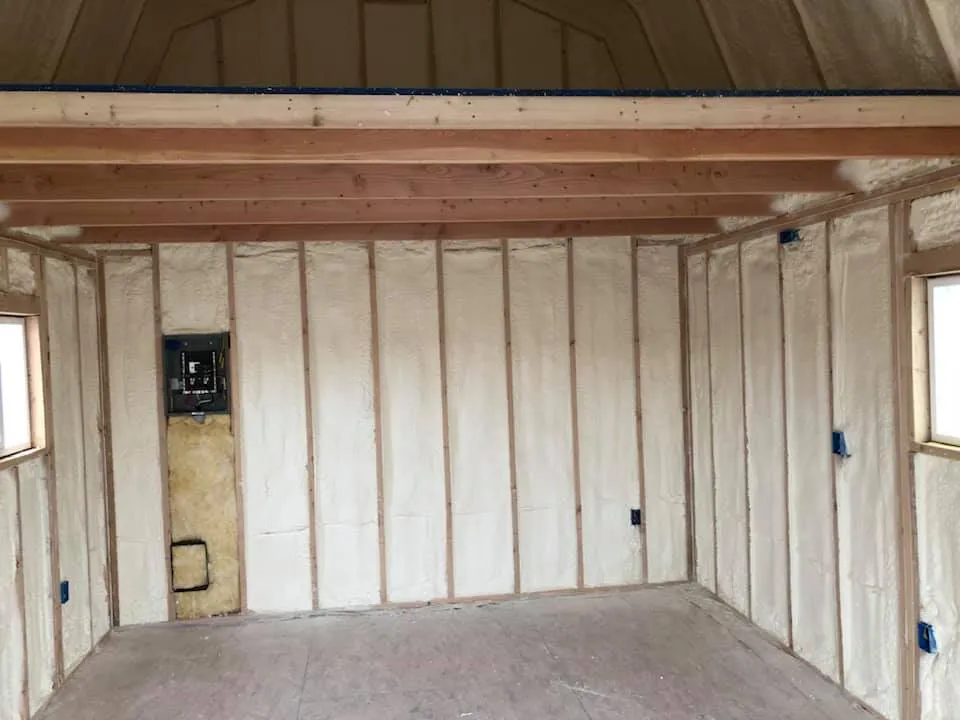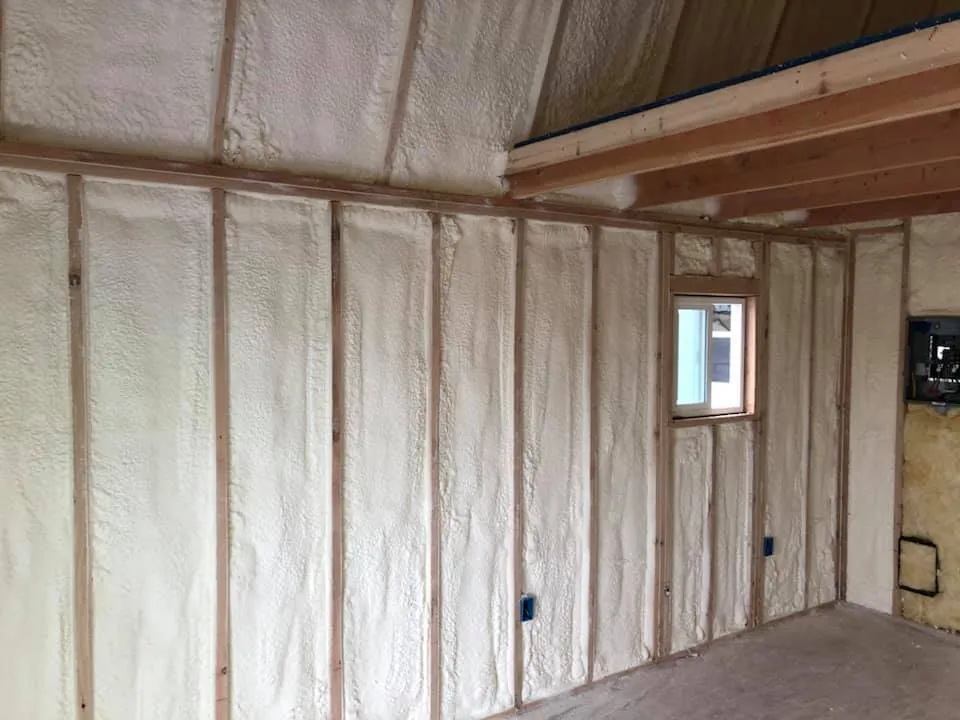
Proper insulation is the key to maintaining a comfortable home in Boise, where the climate swings from hot, dry summers to very cold, snowy winters. It works by slowing the transfer of heat, keeping your home warmer in the winter and cooler in the summer. This thermal barrier means your heating and cooling systems don’t have to work as hard, which leads to more stable indoor temperatures and lower energy bills. For Boise homeowners, this translates to consistent comfort regardless of the season.
With average high temperatures reaching into the 90s in July and lows dipping into the 20s in January, the demand on a home’s heating and air conditioning is significant. Effective insulation directly counters these extremes, preventing the summer heat from penetrating your home and stopping valuable indoor heat from escaping during the winter. This guide explains how different insulation types function, what to look for in your own home, and why addressing your home’s thermal envelope is a smart decision for anyone living in the Treasure Valley. Decades of experience in the region provide a deep understanding of how to best manage these seasonal demands.
Insulation’s primary job is to resist heat flow. The measurement for this resistance is called an R-value; the higher the R-value, the more effective the insulation. In a climate like Boise’s, this function is critical year-round.
During Boise’s hot and dry summers, the sun beats down on your roof and walls, causing heat to radiate into your living spaces. Insulation acts as a barrier to this radiant heat gain. It slows the heat transfer from the hot attic and walls into the cooler interior of your house. Without adequate insulation, your air conditioner must run almost constantly to keep up, leading to high energy costs and uncomfortable hot spots within the home.
In winter, the dynamic reverses. The warm air generated by your furnace naturally wants to move toward colder areas, like your attic, walls, and crawl space. Insulation traps that warm air inside, preventing it from escaping. This is especially important in Boise, where winter temperatures frequently drop below freezing. A well-insulated home holds onto its heat longer, reducing the workload on your furnace and preventing cold drafts. According to estimates from the U.S. Environmental Protection Agency, homeowners can save an average of 15% on heating and cooling costs by air sealing and adding insulation.
Different types of insulation have varying properties and are suited for different applications within a home. The most common materials include fiberglass, cellulose, and spray foam. Understanding their differences is key to making an informed choice.
| Insulation Type | Typical R-Value (per inch) | Best For | Key Characteristics |
|---|---|---|---|
| Fiberglass Batts | R-2.9 to R-3.8 | Walls, Attics, Floors | Cost-effective and widely available. Can lose R-value if compressed or exposed to moisture. |
| Blown-In Cellulose | R-3.1 to R-3.8 | Attics, Wall Cavities | Made from recycled paper, it fills irregular spaces well. Can settle over time, reducing its effectiveness. |
| Spray Foam | R-3.5 to R-6.5 | Attics, Walls, Basements | Provides a superior air seal and high R-value. Higher initial cost but offers excellent long-term performance. |
Spray polyurethane foam (SPF) stands out because it insulates and air seals in a single application. It expands upon application to fill gaps and cracks, creating a continuous barrier that traditional insulation types cannot match. This is particularly effective in stopping the drafts common in many older Boise homes.
Bonus Tip: Air sealing is just as important as R-value. Gaps and cracks in your home’s envelope can undermine the performance of even the best insulation. Sealing these leaks first ensures you get the full benefit of your investment.
To achieve year-round comfort, insulation must be installed in all the right places. For a typical home in Boise, the priority areas are the attic, walls, and crawl space or basement.
The attic is the single most important place to insulate. It is the primary site of heat gain in the summer and heat loss in the winter. For Boise, which is in Climate Zone 5, ENERGY STAR recommends an attic R-value of R49 to R60 for an uninsulated space. If you have 3-4 inches of existing insulation, you should add R38 to R49 more.
Insulating exterior walls can make a noticeable difference in comfort and energy use. In new construction, this is straightforward. For existing homes, blown-in insulation can be added to wall cavities with minimal disruption. The recommended R-value for wood-frame walls is R-20.
An uninsulated crawl space or basement can lead to cold floors in the winter and allow moisture to enter the home. Insulating these areas helps maintain a consistent temperature on the main floor and can improve indoor air quality by controlling humidity. For crawl space walls, an R-value of R-15 to R-19 is recommended.
Bonus Tip: Check for air leaks around attic access hatches, recessed lighting fixtures, and plumbing vents. These are often overlooked spots where significant energy is lost. Sealing them with caulk or foam can be a quick and effective fix.
Before investing in new insulation, take time to evaluate your home’s specific situation.

Boise is in Climate Zone 5. This dictates specific R-value recommendations. For the most impact, attics should have R49-R60, walls R-20, and floors or crawl spaces R-30.
Yes, many types of insulation, particularly spray foam and cellulose, are excellent at absorbing sound waves. This can help reduce noise from traffic, neighbors, and airplanes, creating a quieter indoor environment.
Some insulation types, like fiberglass, lose their R-value when they get wet and can harbor mold if they don’t dry out completely. Closed-cell spray foam is waterproof and is not affected by moisture, making it a good choice for areas prone to dampness.
When installed by trained professionals following safety protocols, spray foam insulation is safe. Installers wear protective gear during application, and the material is stable and inert once it has fully cured, which typically takes about 24 hours.
Proper insulation is a fundamental part of creating a comfortable and energy-efficient home in Boise. It stabilizes indoor temperatures through hot summers and cold winters, reduces the strain on your HVAC system, and lowers your utility bills. Before moving forward, carefully assess your home’s current condition, consider your budget, and think about your long-term goals for comfort and energy savings.
Understanding the unique needs of your home is the first step. For a detailed evaluation and clear guidance on the best insulation solutions for your property, contact Nevada Urethane for a professional consultation. You can reach the team by phone at (775) 397-2820 or via email at [email protected] to discuss how to make your home more comfortable and efficient throughout the year.